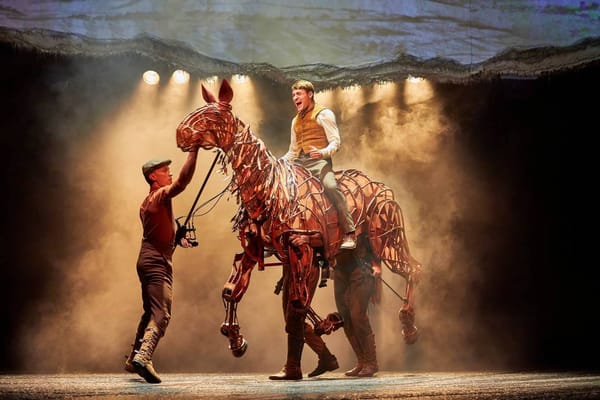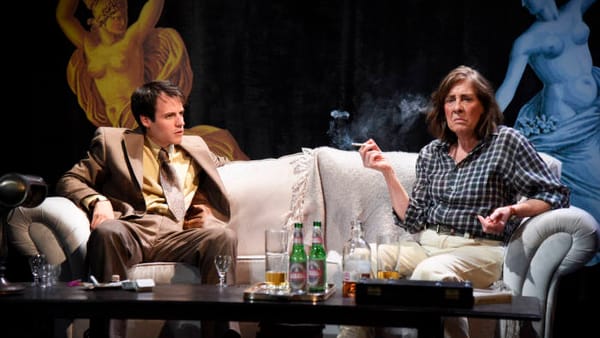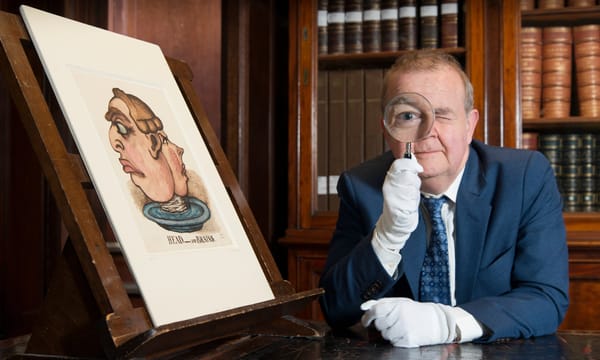The Cat in the Hat Strikes Back!

When books are made into movies, fans and critics flock like vultures to tease apart the catastrophe to come. When the holy works of Dr Seuss were converted into a musical by Monty Python’s Eric Idle, similar scenes could be predicted. The story tries to integrate characters from across the Seuss universe like The Cat in the Hat, Horton the Elephant, Gertrude McFuzz and many more. The story focuses on Horton trying to protect the tiny planet of Whoville, which lies on a speck of dust, from the inhabitants of the Jungle of Nool. Aimed at children, the character of Jojo (Anna Barnes), a young inhabitant of Whoville with an overzealous imagination, allows the young audience to connect to the performance. Themes of acceptance, bullying and loyalty are explored with the mantra “A person’s a person, no matter how small” repeated throughout.
The Cat in the Hat, played by Marc Pickering, deserves a special mention as his perfect choreography and impeccable comedic timing brings the whole show together. The way Pickering moves and holds himself means that despite not looking very cat-like, the children are fully convinced that he is in fact The Cat in the Hat. The costumes are all subtle but effective – no cheap face-painted animals here! There are a few instances where Pickering performs silent comedic scenes, a little like Tom and Jerry. They are seamlessly executed and allow even the youngest children, who may not be following the plot, to have a giggle. Disappointingly, the extremely talented Ngozi Ugoh (portraying the Sour Kangaroo) is given the least solos, despite being one of the most engaging and fun cast members. Her energetic dancing, sassy mannerisms and amazing voice give her the diva quality that captivates the entire audience, no matter how small.
The plot is one problem area. The story is unsurprisingly too simple for the adults in the room and yet too complicated and dragged out for the younger children to follow. Other than breaking into impressive dance numbers, the disconnected performance lacks the crafted perfection of Dr. Seuss’s works. Horton the Elephant, played by Scott Paige, epitomizes all the problems with the production. Firstly, he is the only character dressed in ordinary clothes and it is often hard to believe that Paige is anything other than a paid actor. Paige is given many solos, which were the lowest energy parts of the performance, a problem when the room is full of children with short attention spans. These ballads are important for moving the story along, but, as much of the audience is not even listening, they do not serve their purpose. To make things worse, these scenes have very little in terms of visuals: no choreography, no colourful costumes, nothing.
It must be said that other than the handful of moments where Horton takes centre stage, the choreography, colours and staging are a huge strength and, along with the fun songs, the main selling point of the performance. With a small cast of only twelve and a single set, creative staging and multipurpose props allow for the scenes to come alive. The distractions caused by the complex choreography also allow actors to sneak away for a quick costume change, and be back before anyone realizes they are gone. The drastic costume changes, along with the distinct mannerisms of each character, makes it hard for adults, let alone children, to see that the actors are in fact the same.
This performance is definitely aimed at children and families and for the most part works perfectly for this target audience. It was slightly comic how many children were scared by the overzealous singing of The Cat in the Hat: tears were shed! Fortunately, the cast plays off any crying or even heckling (from a 7 year old!) and, throughout the performance, interacts with the children, shaking their hands, having a quick chat and even a little dance. Overall, this is a high energy performance which runs only 75 minutes and can be enjoyed by the whole family.
-4 stars








